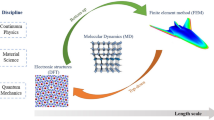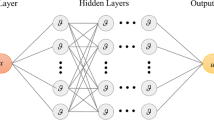Abstract
Efficient development and engineering of high performing interactive devices, such as haptic robots for surgical training benefits from model-based and simulation-driven design. The complexity of the design space and the multi-domain and multi-physics character of the behavior of such a product ask for a systematic methodology for creating and validating compact and computationally efficient simulation models to be used in the design process. Modeling the quasi-static stiffness is an important first step before optimizing the mechanical structure, engineering the control system, and performing hardware in the loop tests. The stiffness depends not only on the stiffness of the links, but also on the contact stiffness in each joint. A fine-granular Finite element method (FEM) model, which is the most straightforward approach, cannot, due to the model size and simulation complexity, efficiently be used to address such tasks. In this work, a new methodology for creating an analytical and compact model of the quasi-static stiffness of a haptic device is proposed, which considers the stiffness of actuation systems, flexible links and passive joints. For the modeling of passive joints, a hertzian contact model is introduced for both spherical and universal joints, and a simply supported beam model for universal joints. The validation process is presented as a systematic guideline to evaluate the stiffness parameters both using parametric FEM modeling and physical experiments. Preloading has been used to consider the clearances and possible assembling errors during manufacturing. A modified JP Merlet kinematic structure is used to exemplify the modeling and validation methodology.























Similar content being viewed by others
References
Eriksson MG (2006) Haptic and visual simulation of a material cutting process. Licentiate Thesis, KTH, Stockholm
Pashkevich KDCA (2009) A Nonlinear effect in stiffness modeling of robotic manipulators. In: Proceedings of international conference on computer and automation technology (ICCAT 2009), vol 58, pp 581–586
Ueberle M, Mock N, Buss M (2007) Design, control, and evaluation of a hyper-redundant haptic device. In: Ferre M, Buss M, Aracil R, Melchiorri C, Balaguer C (eds) Advances in Telerobotics, ser. Springer Tracts in Advanced Robotics. vol 31, pp 25–44 Springer, Berlin. Available: http://dx.doi.org/10.1007/978-3-540-71364-73
Rivin EI (1999) Stiffness and damping in mechanical design. Marcel Dekker Inc, New York
Park J-J, Lee Y-J, Song J-B, Kim H-S (2008) Safe joint mechanism based on nonlinear stiffness for safe human-robot collision. In: IEEE international conference on robotics and automation. ICRA 2008. pp 2177–2182
Angeles J, Park FC (2008) Performance evaluation and design criteria. In: Siciliano B, Khatib O (eds) Springer handbook of robotics. Springer, Berlin, pp 229–244
Luca AD, Book WJ (2008) Robots with flexible elements. In: Springer Handbook of Robotics. pp 287–319
Nof SY (1999) Handbook of industrial robotics. Wiley, New York
Meggiolaro MA, Dubowsky S, Mavroidis C (2005) Geometric and elastic error calibration of a high accuracy patient positioning system. Mech Mach Theory 40(4):415–427. Available: http://www.sciencedirect.com
Carbone G (2011) Stiffness analysis and experimental validation of robotic systems. Front Mech Eng 6:182–196. Available: http://dx.doi.org/10.1007/s11465-011-0221-3
Gosselin C (1990) Stiffness mapping for parallel manipulators. IEEE Trans Robotics Autom 6:321–342
El-Khasawneh B, Ferreira P (1999) Computation of stiffness and stiffness bounds for parallel link manipulator. Int J Mach Tools Manuf 39(3):377–382
Zhang CMD, Xi F, Lang S (2004) Analysis of parallel kinematic machine with kinetostatic modeling method. Robotics Comput Integr Manuf 20:151–165
Zhang D (2000) Haptic and visual simulation of a material cutting process. Ph.D Thesis. Laval University, Quebec
Gosselin C, Zhang D (2002) Stiffness analysis of parallel mechanisms using a lumped model. Int J Robotics Autom 17:17–27
Wang Y, Huang T, Zhao X, Mei J, Chetwynd D, Hu S (2006) Finite element analysis and comparison of two hybrid robots-the tricept and the trivariant. In: 2006 IEEE/RSJ international conference on intelligent robots and systems, pp 490–495
Yun Y, Li Y (2008) Comparison of two kinds of large displacement precision parallel mechanisms for micro/nano positioning applications. In: 2008 IEEE conference on robotics, automation and mechatronics, pp 284–289
Gonalves RS, Carvalho JCM (2008) Stiffness analysis of parallel manipulator using matrix structural analysis. In: Ceccarelli M (ed) Proceedings of EUCOMES 08, Springer, Netherlands, pp 255–262
Deblaise D, Hernot X, Maurine P (2006) A systematic analytical method for pkm stiffness matrix calculation. In: Proceedings 2006 IEEE international conference on robotics and automation. ICRA 2006, pp 4213–4219
Przemieniecki JS (1985) Theory of matrix structural analysis. Dover Publications Inc, New York
Dong W, Du Z, Sun L (2005) Stiffness influence atlases of a novel flexure hinge-based parallel mechanism with large workspace. In: 2005 IEEE/RSJ international conference on intelligent robots and systems. (IROS 2005). pp 856–861
Ang Jr MH, Wang W, Loh RNK, Low T-S (1997) Passive compliance from robot limbs and its usefulness in robotic automation. J Intell Robotics Syst 20(1)1–21. Available: http://dx.doi.org/10.1023/A:1007952828908
Pinto C, Corral J, Altuzarra O, Hernandez A (2010) A methodology for static stiffness mapping in lower mobility parallel manipulators with decoupled motions. Robotica 28(05):719–735. Available: http://dx.doi.org/10.1017/S0263574709990403
GG Bouzgarrou BC, Fauroux JC, Heerah Y (2004) Rigidity analysis of t3r1 parallel robot with uncoupled kinematics. In: 35th international symposium on robotics (ISR)
Li Y-W, Wang J-S, Wang L-P (2002) Stiffness analysis of a stewart platform-based parallel kinematic machine. In: Proceedings IEEE international conference on robotics and automation. ICRA ’02, vol 4, pp 3672–3677
Charles MM, Clinton CM, Zhang G, Wavering AJ (1997) Stiffness modeling of a stewart-platform-based-milling machine. In: Transaction of NAMRI/SME, Technical Report, Institute for Systems Research
Uchiyama M, Tsumaki Y, Yoon W-K (2007) Design of a compact 6-dof haptic device to use parallel mechanisms. In: Robotics Research, ser. Springer Tracts in Advanced Robotics, vol 28. Springer, Berlin, pp 145–162
Bonnemains T, Chanal H, Bouzgarrou B-C, Ray P (2009) Stiffness computation and identification of parallel kinematic machine tools. J Manuf Sci Eng 131(4):041013. Available: http://link.aip.org/link/?MAE/131/041013/1
Ceccarelli M, Carbone G (2005) Numerical and experimental analysis of the stiffness performances of parallel manipulators. In: 2nd International Colloquium of the Collaborative Research Centre 562, Braunschweig
American National Standards Institute (ANSI) ANSI/RIA R15.05-1-1990 (1990) American National Standard for Industrial Robots and Robot Systems: point-to-point and static performance characteristics–evaluation. American National Standard Institute (ANSI), New York. http://www.freestd.us/soft/107904.htm
ISO 9283:1998 (2003) Manipulating industrial robots-performance criteria and related test methods
Wu L-PWJ, Wang J-J, Li T-M (2007) Dexterity and stiffness analysis of a three-degree-of-freedom planar parallel manipulator with actuation redundancy. J Mech Eng Sci Proc IMECH, Part C 221:961–969
B5.54 (2005) Methods for performance evaluation of computer numerically controlled machining centers
Ansys Inc., Canonsburg. Available: http://www.ansys.com. Accessed 25 May 2010
Anton van Beek (2009) Advanced engineering design lifetime performance and reliability. TU Delft, Delft
PTC-Parametric Technology Corporation, Needham. Available: http://www.ptc.com. Accessed 25 May 2010
Khan S, Andersson K, Wikander J (2011) Optimal design of a 6-dof haptic device. In: IEEE International Conference on Mechatronics (ICM), pp 713–718
Hao F, Merlet J-P (2005) Multi-criteria optimal design of parallel manipulators based on interval analysis. Mech Mach Theory 40(2):157–171
Timoshenko SP, Goodier JN (1970) Theory of elasticity. Cambridge University Press, Cambridge
Johnson KL (1970) Contact mechanics. Cambridge University Press, Cambridge
Ahmad A, Anderson K, Sellgren U (2011) An approach to stiffness analysis methodology for haptic devices. In: 2011, 3rd international congress on ultra modern telecommunications and control systems and workshops (ICUMT), pp 1–8
dSpace inc. Available: http://www.dspace.com. Accessed 25 May 2010
Acknowledgments
This research is supported financially by the Higher Education Commission (HEC) Pakistan and Department of Machine Design, KTH Royal Institute of Technology, Stockholm, Sweden.
Author information
Authors and Affiliations
Corresponding author
Rights and permissions
About this article
Cite this article
Ahmad, A., Andersson, K., Sellgren, U. et al. A stiffness modeling methodology for simulation-driven design of haptic devices. Engineering with Computers 30, 125–141 (2014). https://doi.org/10.1007/s00366-012-0296-4
Received:
Accepted:
Published:
Issue Date:
DOI: https://doi.org/10.1007/s00366-012-0296-4




